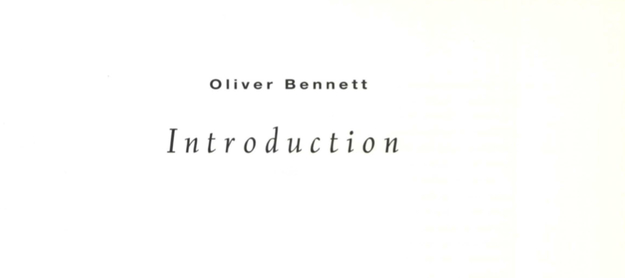Live work has been catalytic in re-opening the dialogue and relationship between art and life. This relationship has been realised in various ways. To take examples, there is the site-specific installation using the architectural, organic or otherwise 'real’ space as a sculptural framework with unique demands and capabilities; there is the use of the body as the location of the artwork in performance, there is the historical-romantic designation of life-as-art, as revitalised by performance work, and there is the Duchampian process of recontextualising everyday objects and activities into the art field.
In 1990, those forms of art activity, as developed over the last few decades, have acquired some level of maturity. Although the semantic debate about live art has died down, the problems of classification persist, but nowadays the debate is not so much the conceptual one of what art is or what to call it, but where art is, and what it is doing there.
Equally, much has been said about the disappearing boundaries between different media that were an original function of performance work. But the boundaries be tween the agencies involved in the placing of the artwork have, if not dissolved, changed much over the last decade. Site-specific projects like Edge 90 draw in the custodians of the sites, sponsors, administrators, public funders, public relations consultants and the media, council workers, incidental viewers and even, from time to time, the police. Though, to quote Carl Andre: art is u’luit artists do, there is with this kind of work a multi-social involvement with the art-production process, especially in the area of development, although the notion of art in the community has become devalued, there is a process at work which makes for a great involvement of local resources, and not necessarily for the purpose of municipal browbeating. The artwork becomes not so much an intervention, that buzz word with its aggressive implication of seizing space, but a fully designed collaboration between these various agencies for often abstract mutual benefit.
As the Eighties have shown, art events without commodity status can be used in terms of different value systems. An international audience, both in person and via the media, can mean much to local councils and companies, even if it is in invisible public relations for the future. Property developers in the us have had an adage for some time follow the art. It is widely believed by development workers that art precedes gentrification and within the complex process of city regenerations and planning, cultural activity is always part of the equation.
The attitude of the art worker, in this set-up, can become that of the missionary, righteously disseminating art values in hostile, underdeveloped places. And for others, the impulse may be benign and pedagogical, a Fabian legacy hinting at the notion of improvement and instruction. Curatorial incursions into new places provide a crucible for the various discussions about how art is expected to perform in these places; whether it has an authoritarian presence, precisely what the militant ambiguities and enigmatic qualities of this work mean to a non-art audience, whether the loaded, exclusive white space of modernism is still there in the minds of the art community.
In its second term, Edge has accomplished a wide-angled focus. Rather than courting the gloss of homogeneous internationalism. Edge comes closer to the idea, lifted from computer terminology, of multi-locality; the world-wide distribution of subjectivism. Consequently, it is more illuminating to see the artists' work divorced from genre definition, particular historicisms and the art nexus. Hopefully Edge 90 can benefit from this, and from its engagement with cultural promotions in the host cities, while retaining an increasingly distinct curatorial identity.
Mediamatic Magazine vol 4#4 1 Jan 1990
Introduction
Edge 90 has expanded on its inaugural sub-title: an international experiment in art. The theme of this years biennale, art and life in the Nineties, has been chosen to express the collusion of many live and intermedia artworks with personal and architectural spaces normally associated with the everyday necessities of work, recreation, transport and so on.
